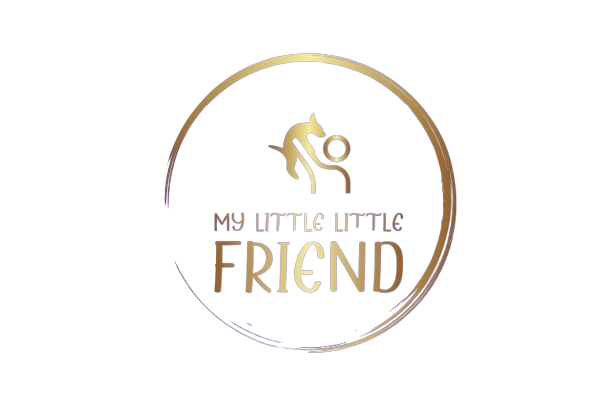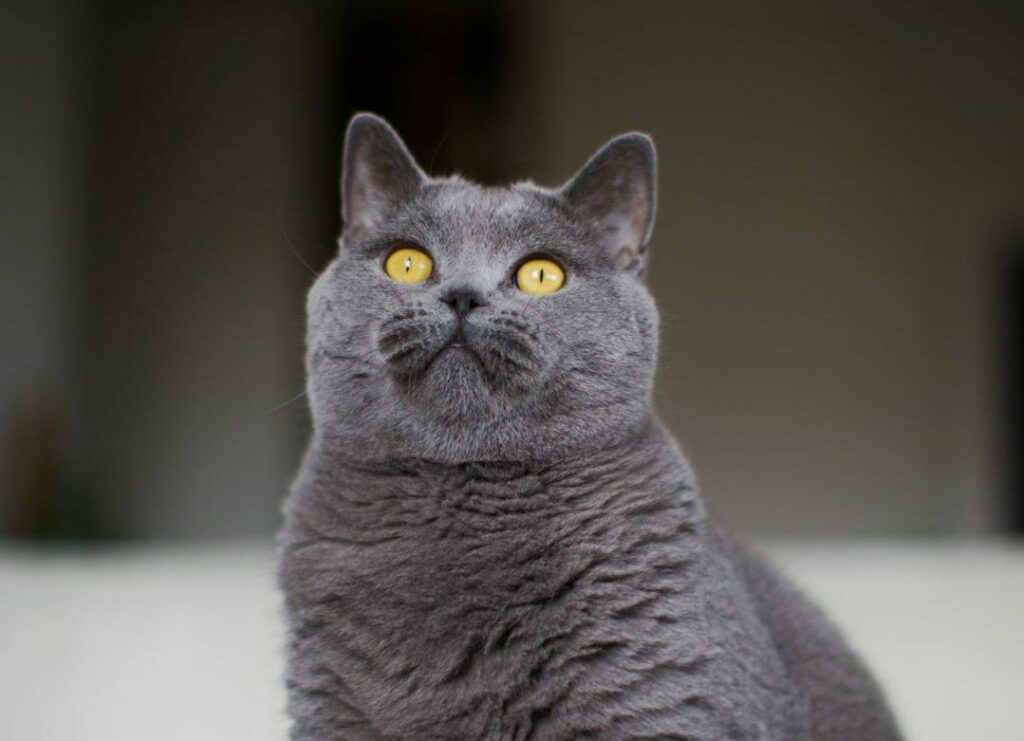The Enduring British Shorthair: A Teddy Bear with a Regal Heart
The British Shorthair, with its plush coat, captivating eyes, and calm demeanor, embodies elegance and companionship. Often referred to as the “Brit Shorthair” or simply “Brit,” this breed has captured hearts for centuries, earning a reputation as a loyal and low-maintenance feline friend. Delving into the history, characteristics, care requirements, and fascinating facts surrounding the British Shorthair reveals a breed steeped in tradition and brimming with charm.
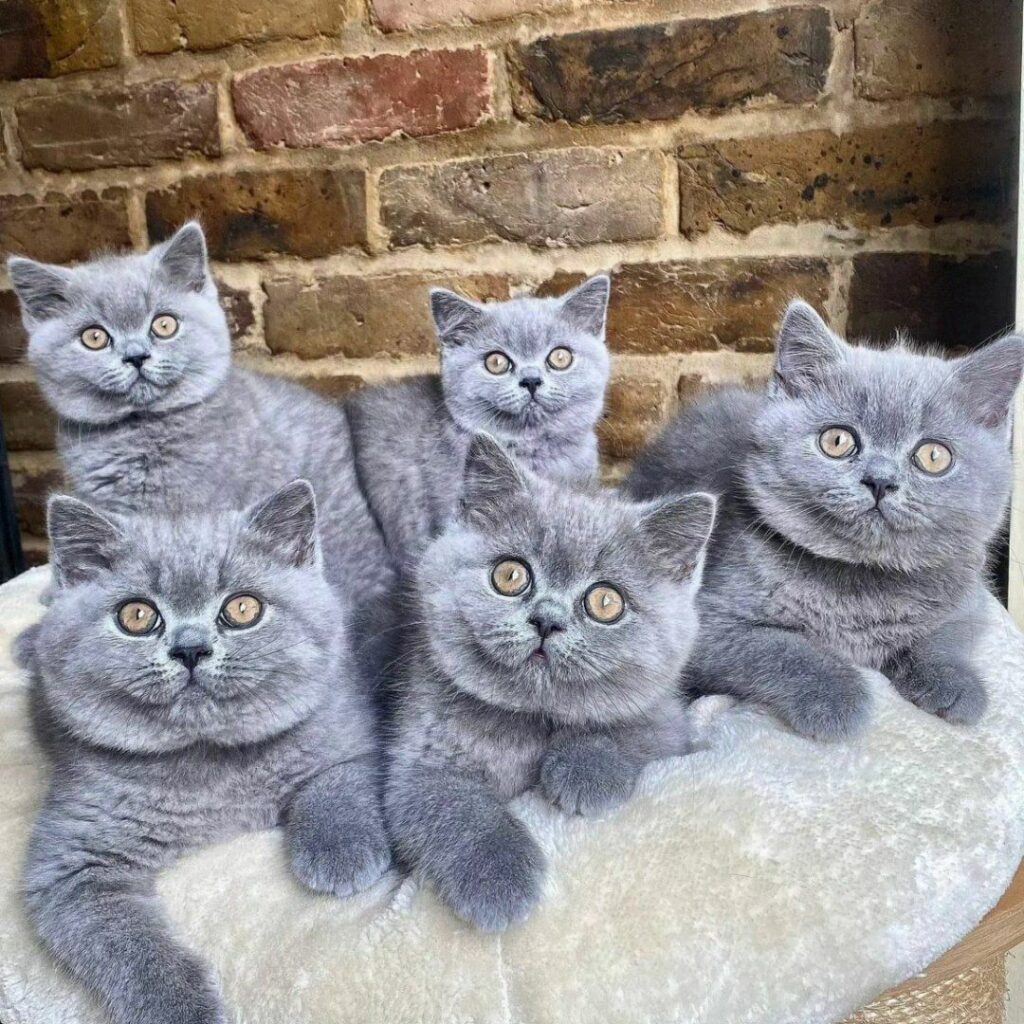
A Storied Past: The British Shorthair’s Origins
Unlike many pedigreed cat breeds with meticulously documented histories, the British Shorthair’s origins are shrouded in a delightful obscurity. Historical evidence suggests their story begins alongside the history of Britain itself. The Romans, who invaded Britain in the 1st century AD, are believed to have brought shorthaired cats with them for rodent control. These early feline settlers likely interbred with the native wildcat population, laying the foundation for the British Shorthair breed we know today.
For centuries, these sturdy, short-haired cats thrived as working companions on farms and around homes across Britain. Their natural hunting skills and thick fur, well-suited to the island’s climate, made them invaluable companions. However, unlike some working cat breeds, the British Shorthair’s gentle nature and even temperament also endeared them to families, earning them a place not just as mousers but also as cherished pets.
By the late 18th and early 19th centuries, selective breeding practices began to refine the British Shorthair. Cat fanciers in England sought to develop a distinct breed with a characteristically round head, thick coat, and a powerful build. These early breeders crossed the existing British shorthaired cats with other breeds, possibly including Persians and Russians, to achieve the desired features.
The first official cat show in England in 1871 marked a turning point for the British Shorthair. These “British Blues,” as they were initially called due to their most common coat color, were showcased alongside other emerging breeds. Formal breed standards were established, solidifying the British Shorthair’s place in the world of pedigreed cats.
Throughout the 20th and 21st centuries, the British Shorthair continued to gain popularity worldwide. Their calm temperament, low-maintenance needs, and stunning appearance resonated with cat lovers across the globe. Breeders further diversified the breed’s color palette, offering a wider range of coat colors and patterns beyond the classic blue. Today, the British Shorthair remains a popular breed, consistently ranking among the top choices for cat owners seeking a gentle and regal feline companion.
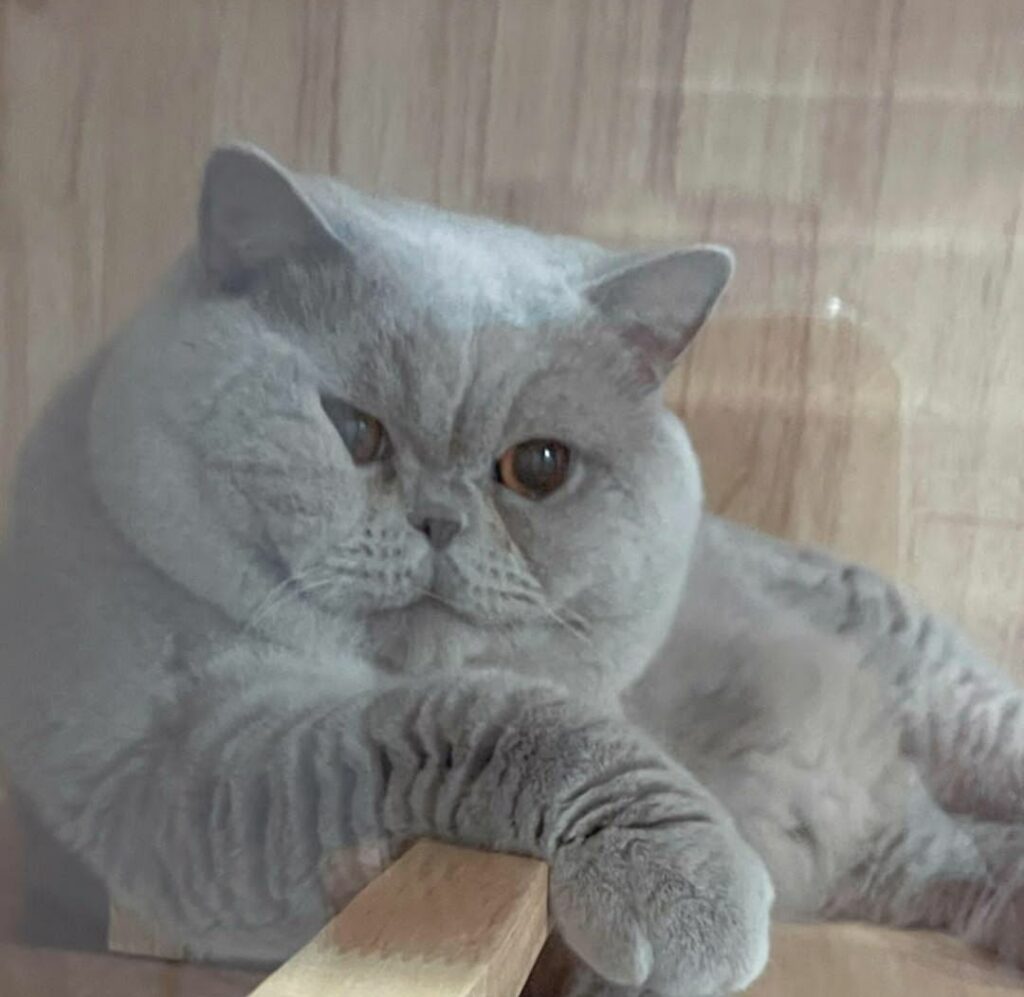
A Teddy Bear in Disguise: The British Shorthair’s Appearance
The defining characteristic of the British Shorthair is undoubtedly their plush, dense coat. This double coat provides excellent insulation and requires regular brushing to prevent matting. British Shorthairs come in a remarkable variety of colors and patterns, including solid colors like blue (grey), black, red, and cream, as well as bi-color and tabby variations. These diverse coat options allow potential owners to find a British Shorthair that perfectly complements their preferences.
Beyond their fur, British Shorthairs are known for their distinctive facial features. They have a round head with full cheeks, particularly in males, and a broad, short nose. Their large, round eyes can be copper, green, blue, or even a combination of colors, adding to their captivating expression. The British Shorthair’s body is typically cobby, meaning it’s short and compact with well-rounded curves. Their legs are short and sturdy, contributing to their overall teddy bear-like appearance. Males tend to be larger and more muscular than females, with males reaching weights of 7-10 kg (15-22 lbs) and females weighing 4-7 kg (9-15 lbs).
A Gentle Soul: The British Shorthair’s Personality
The British Shorthair’s temperament is as captivating as its appearance. They are renowned for their docile and affectionate nature, earning them nicknames like “gentle giants” and “teddy bear cats.” Unlike some highly active breeds, British Shorthairs are known for their calm and composed demeanor. They are content with quiet companionship and enjoy gentle interaction with their humans.
These intelligent felines can be trained with patience and positive reinforcement. However, they are not known for being overly playful or energetic. British Shorthairs generally prefer quiet playtime and appreciate a calm and predictable environment. While they may not be the most lap-loving cats, they do form strong bonds with their owners and thrive on dedicated cuddle time on their own terms.
Their calm nature and tolerance make them well-suited for families with older children who can respect their boundaries. However, due to their lower energy levels and potential dislike of roughhousing, they might not be ideal for households with very young children or those seeking a highly active feline companion.
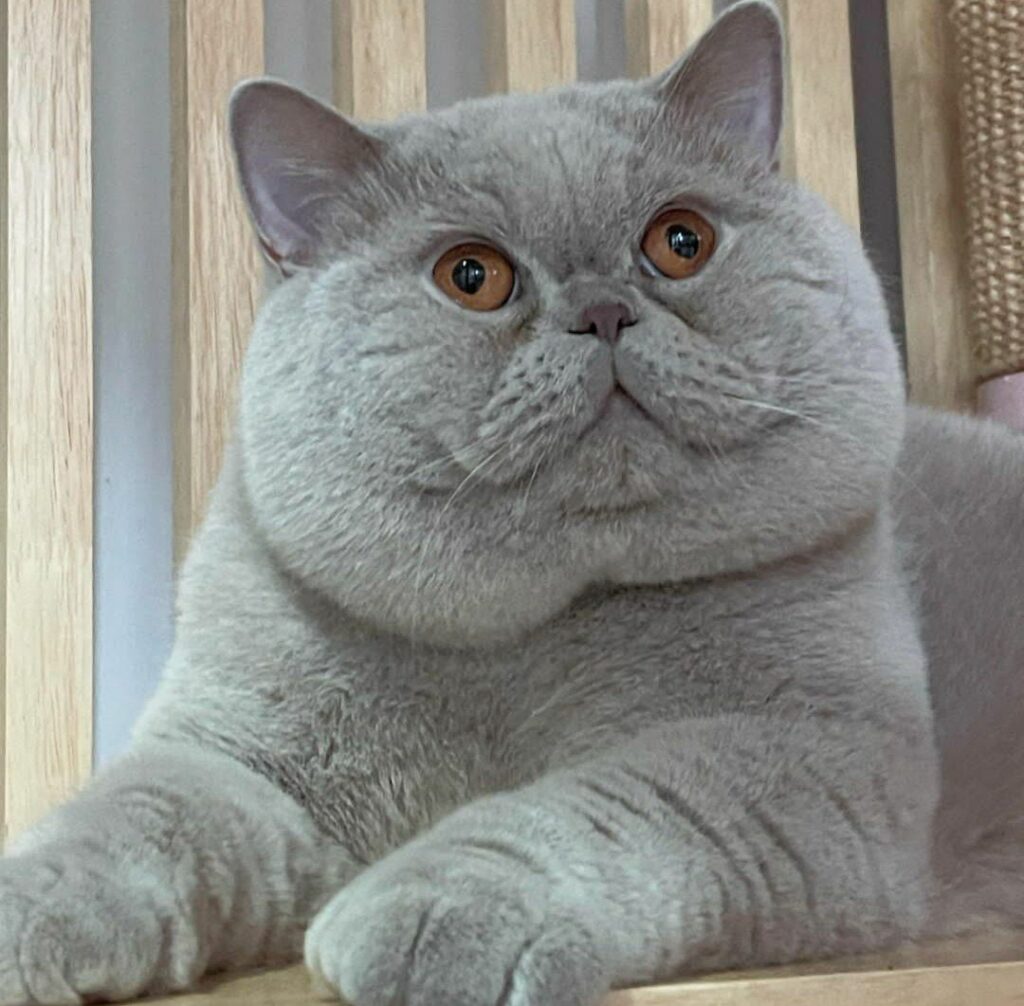
Living with a Gentle Giant:
Here are some additional things to consider when living with a British Shorthair:
Socialization: While British Shorthairs are generally friendly, early socialization with other pets and people can help them become well-adjusted companions. Introducing them to new experiences and environments in a positive way can prevent shyness or anxiety in adulthood.
Mental Stimulation: Despite their lower energy levels, British Shorthairs still benefit from mental stimulation. Providing scratching posts, climbing structures, and interactive toys can help them stay engaged and prevent boredom. Food puzzles and treat dispensing toys can also provide mental enrichment while catering to their natural hunting instincts.
Respecting Their Boundaries: British Shorthairs are known for their independent streak and dislike being forced into situations they find uncomfortable. Learn to recognize their body language, such as flattened ears or a swishing tail, and respect their need for quiet time or space. Positive reinforcement training techniques are ideal for encouraging desired behaviors without creating stress.
A Life of Luxury: Essential Care for Your British Shorthair
Owning a British Shorthair comes with the responsibility to provide them with the proper care to ensure their health and happiness. Here are some key aspects to consider:
Diet: British Shorthairs are not known for being overly active. A high-quality cat food formulated for less active breeds is crucial to prevent obesity. These formulas typically have a moderate protein content and focus on essential nutrients that promote healthy skin and fur. Regular feeding schedules and monitoring their weight are also important for maintaining optimal health.
Grooming: While their short fur might seem low-maintenance, British Shorthairs require regular brushing to prevent matting. Brushing once or twice a week with a soft slicker brush is recommended to remove loose hair and maintain the health and shine of their coat. During shedding seasons, more frequent brushing may be necessary.
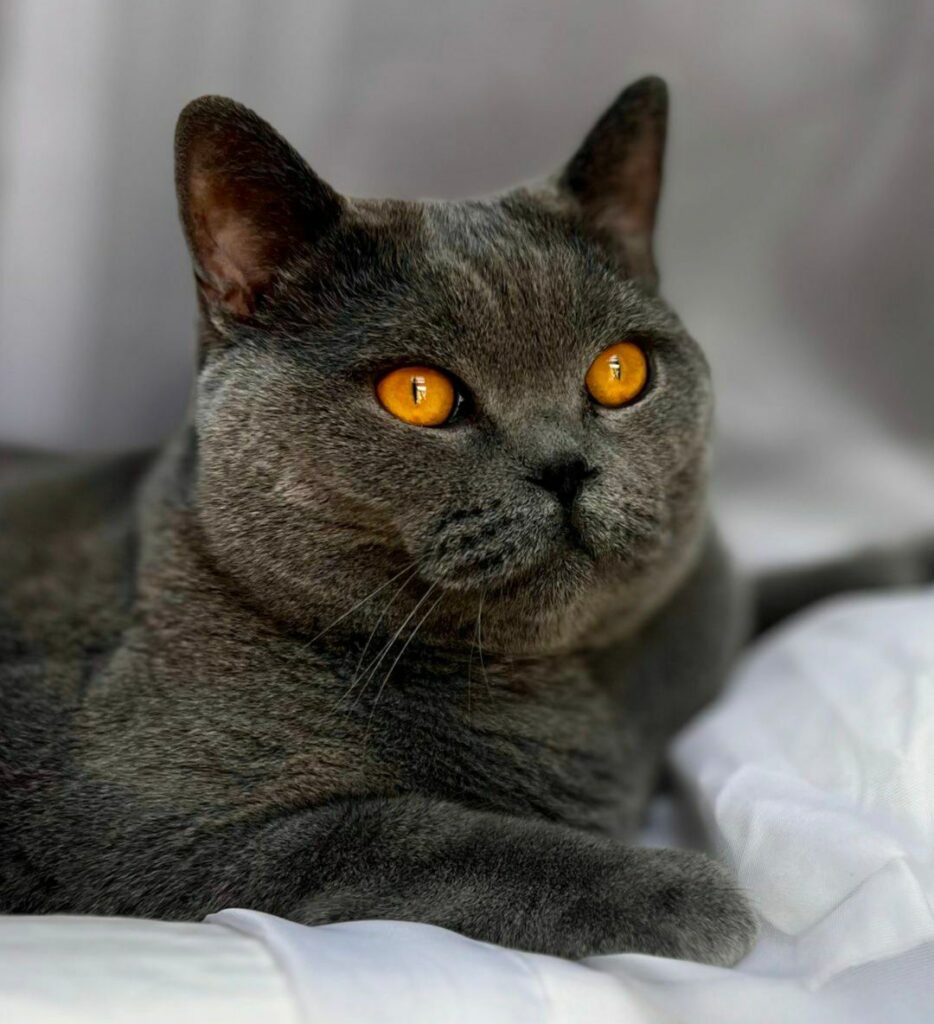
Veterinary Care: Regular veterinary checkups are essential for all cats, including British Shorthairs. These checkups can help detect potential health issues early on and ensure your feline friend receives the preventive care they need. British Shorthairs can be prone to certain health conditions, such as:
Polycystic Kidney Disease (PKD): This is an inherited genetic condition that can lead to kidney failure in later life. Responsible breeders screen their breeding stock for PKD to minimize the risk of passing it on to kittens.
Hypertrophic Cardiomyopathy (HCM): This is a thickening of the heart muscle that can affect some cats. Regular checkups and monitoring by a veterinarian are crucial for early detection and management of this condition.
Dental Issues: Dental problems are common in cats, and British Shorthairs are no exception. Regular dental cleanings at the vet and a focus on good dental hygiene at home are crucial to prevent painful dental problems.
Providing a Loving Environment: While British Shorthairs are not known for being highly active, they still appreciate opportunities for playtime and exercise. Interactive toys that encourage them to stalk, pounce, and bat can help them expend some energy and satisfy their natural hunting instincts. Climbing structures and scratching posts are also essential for these felines to express natural behaviors and maintain healthy claws.
British Shorthairs thrive on companionship but on their own terms. Respect their need for quiet time and don’t force interaction when they seem disinterested. However, dedicate time for gentle play sessions, petting, and positive reinforcement training to strengthen your bond with your feline friend.

Beyond the Teddy Bear: Fascinating Facts about British Shorthairs
The Original Working Cat: While British Shorthairs are now cherished companions, their origins lie in their role as working cats. Their natural hunting instincts and thick fur made them invaluable mousers for centuries.
Hollywood Stars: British Shorthairs have graced the silver screen and popular culture. The Cheshire Cat from Lewis Carroll’s “Alice’s Adventures in Wonderland” is often depicted as a British Shorthair, and Garfield’s nemesis, Nermal, is another recognizable Brit Shorthair character.
Cat Fancier’s Favorites: The British Shorthair is one of the oldest established cat breeds recognized by major cat associations worldwide. Their enduring popularity is a testament to their gentle nature, stunning appearance, and adaptability to various living environments.
A Rainbow of Coats: While the classic blue (grey) coat is perhaps the most recognizable color for British Shorthairs, the breed standard now recognizes a vast array of colors and patterns. These include solid colors like black, red, cream, lilac, and white, as well as bi-color and tabby variations like tortoiseshell and calico. This diversity allows potential owners to find a British Shorthair with a coat that perfectly complements their preferences.
The “British Blue” Legacy: The original name for the British Shorthair was the “British Blue” due to the dominance of the blue (grey) coat color in early breeding programs. While this color remains popular, the acceptance of other colors and patterns has significantly broadened the breed’s appeal.
Slow to Mature: British Shorthairs are known for being slow to mature, both physically and mentally. They may retain playful kitten behaviors well into their second or third year before settling into their more dignified adult personalities. This extended kitten-like stage can be a delightful surprise for owners who enjoy a playful feline companion.
The Cat with Nine Lives? While not quite true, British Shorthairs are generally known for their good health and longevity. With proper care and nutrition, these gentle giants can live for 15-20 years, providing their owners with years of companionship and feline charm.
Owning a British Shorthair is a rewarding experience. Their calm demeanor, teddy bear-like appearance, and unwavering loyalty make them truly special companions. By understanding their unique needs, providing proper care, and offering them a loving environment, you can ensure your British Shorthair thrives and brings joy to your life for many years to come. Whether you seek a loyal cuddle buddy for quiet evenings or a gentle companion content with independent exploration, the British Shorthair offers a unique blend of charm, elegance, and timeless appeal.
A Guide To Kitten Obesity
Facebook Twitter Pinterest LinkedIn A Guide To Kitten Obesity A Comprehensive Guide to Kitten Obesity: Keeping Your Furry Friend Fit and Healthy The first year
How Much To Feed a Kitten
Facebook Twitter Pinterest LinkedIn How Much To Feed a Kitten Fueling Feline Growth: A Guide to Kitten Feeding Through the First Year The first year
Hello There!
Facebook Twitter Pinterest LinkedInWelcome to WordPress. This is your first post. Edit or delete it, then start writing! Facebook Twitter Pinterest LinkedIn
